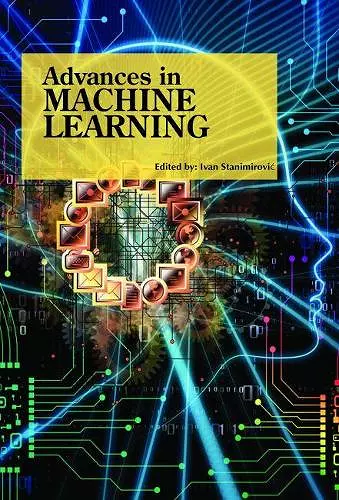Advances in Machine Learning
Format:Hardback
Publisher:Arcler Education Inc
Published:28th Feb '18
Should be back in stock very soon

Recently, a new field of computer science was derived, including methods and techniques of problem solving that cannot be easily described by traditional algorithms. This field, called ""cognitive computing"" or ""real-world computing"", has a varied set of working methodologies, such as: fuzzy logic, approximate reasoning, genetic algorithms, chaos theory, and the Artificial Neural Networks (ANN). The objective of the present work is to introduce the problematic of the latter: definitions, principles and typology, as well as concrete applications in the field of information retrieval.
During the past decade in the field of information retrieval has been experimented with artificial Intelligence (AI) techniques based on rules and knowledge. These techniques seem to have many limitations and difficulties of application, so that already in the present decade work has begun with the more recent. AI techniques, based on inductive learning: symbolic learning, genetic algorithms and neural networks (Chen, 1995).
The earliest work in neural computing dates back to the early 1940s, which neuro-physicist Warren McCulloch and mathematician Walter Pitts proposed, based on their system studies. A formal neuron model implemented by electrical circuits (McMulloch, 1943), whose enthusiasm aroused the neuronal model drove research in this line during the 1950s and 1960s. In 1957 Frank Rosenblatt developed the Perceptron, a network model that possesses the generalization capability, so it has been used to this day in various applications, generally in recognition of patterns. In 1959 Bernard Widrow and Marcial Hoff of Stanford University developed the model ADALINE (ADAptative LINear Elements), first ANN applied to a real problem (noise filters in lines phone calls).
In 1969 Marvin Minsky and Seymour Papert, of MIT, published a work in which they attack the neural model and consider that any research along these lines was sterile (Minsky, 1969). Due to this criticism the works on ANN stop to a new impetus during the 80's. Despite this pause, several researchers continued to work in that direction during the 1970s. Such is the case of the American James Anderson which develops the BSB (Brain-State-in-a-Box) model, or Finnish Teuvo Kohonen who does the same with one based on self-organizing maps.
As of 1982 the interest for the neuronal computation began to take force again. The progress made in hardware and software,...
ISBN: 9781773610672
Dimensions: unknown
Weight: unknown
404 pages